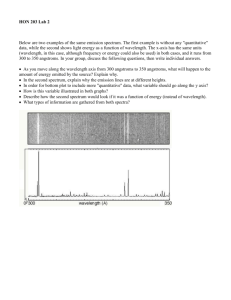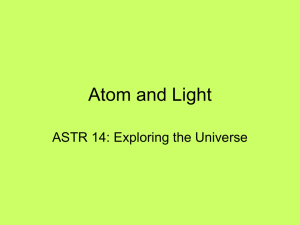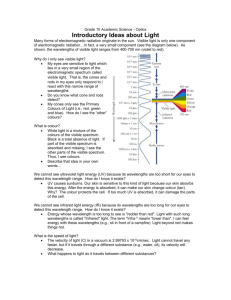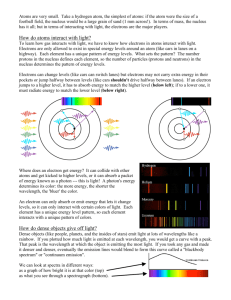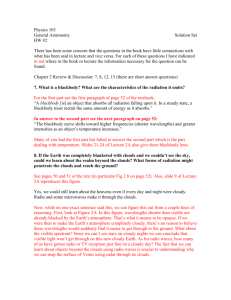Blackbodies and Spectral Lines
advertisement
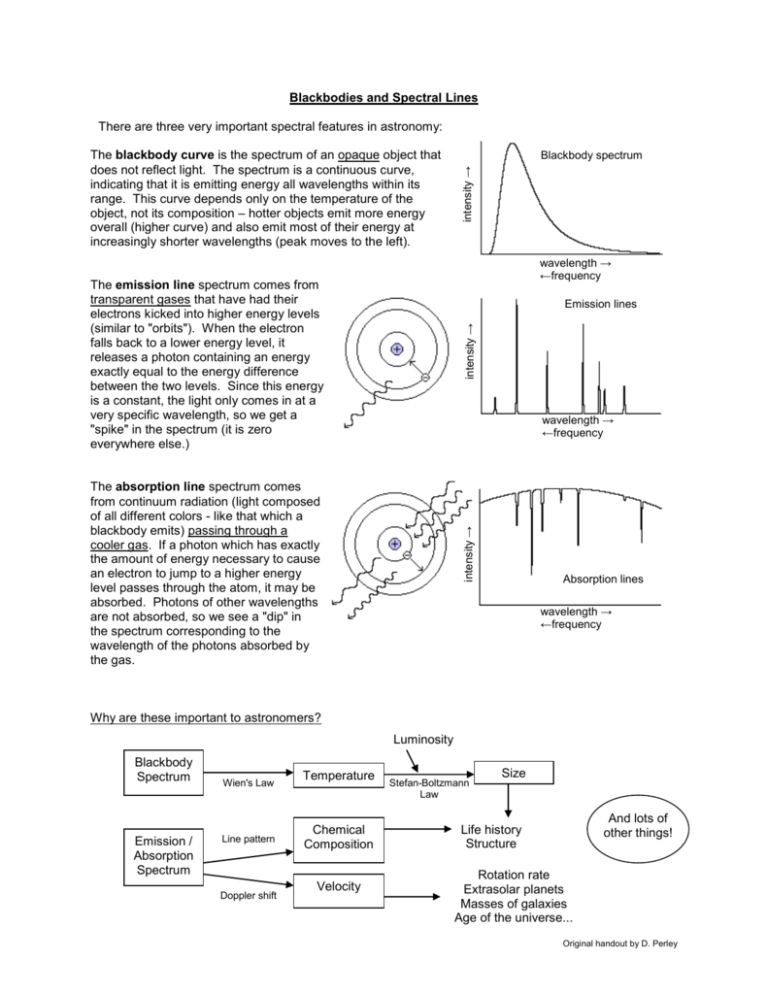
Blackbodies and Spectral Lines There are three very important spectral features in astronomy: Blackbody spectrum intensity → The blackbody curve is the spectrum of an opaque object that does not reflect light. The spectrum is a continuous curve, indicating that it is emitting energy all wavelengths within its range. This curve depends only on the temperature of the object, not its composition – hotter objects emit more energy overall (higher curve) and also emit most of their energy at increasingly shorter wavelengths (peak moves to the left). wavelength → ←frequency The emission line spectrum comes from transparent gases that have had their electrons kicked into higher energy levels (similar to "orbits"). When the electron falls back to a lower energy level, it releases a photon containing an energy exactly equal to the energy difference between the two levels. Since this energy is a constant, the light only comes in at a very specific wavelength, so we get a "spike" in the spectrum (it is zero everywhere else.) intensity → Emission lines wavelength → ←frequency intensity → The absorption line spectrum comes from continuum radiation (light composed of all different colors - like that which a blackbody emits) passing through a cooler gas. If a photon which has exactly the amount of energy necessary to cause an electron to jump to a higher energy level passes through the atom, it may be absorbed. Photons of other wavelengths are not absorbed, so we see a "dip" in the spectrum corresponding to the wavelength of the photons absorbed by the gas. Absorption lines wavelength → ←frequency Why are these important to astronomers? Luminosity Blackbody Spectrum Emission / Absorption Spectrum Wien's Law Line pattern Doppler shift Temperature Chemical Composition Velocity Stefan-Boltzmann Law Size And lots of other things! Life history Structure Rotation rate Extrasolar planets Masses of galaxies Age of the universe... Original handout by D. Perley


